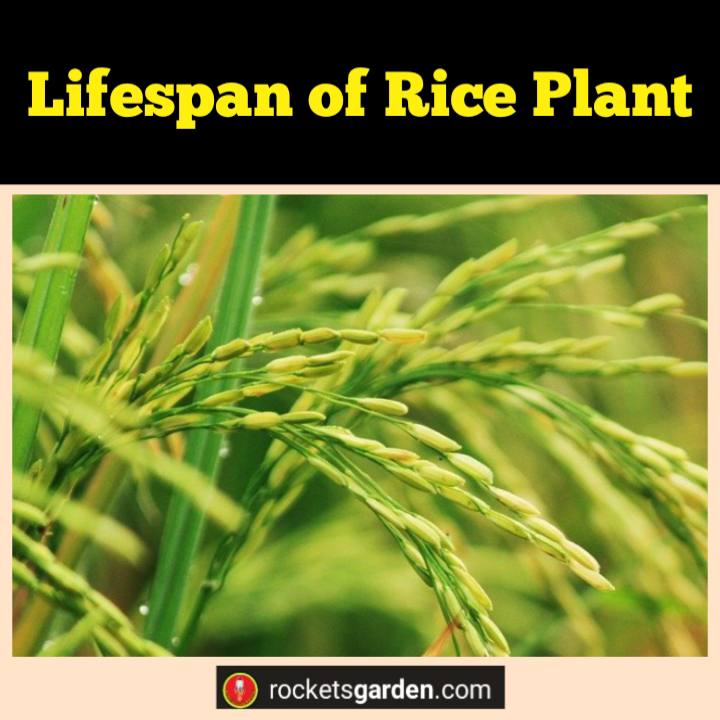
Rice is one of the most important crops in the world, providing food and livelihoods for millions of people. As a crop, rice has a unique growth cycle and lifespan, with different varieties and environmental conditions influencing its growth and productivity.
What Is The Lifespan Of A Rice Plant?
The lifespan of a rice plant refers to the period between planting and harvesting. Generally, a rice plant can live up to six months, but some varieties can live longer. During this period, the rice plant goes through several stages of growth, including germination, seedling, vegetative, and reproductive phases.
The lifespan of a rice plant can be affected by several factors, including climate, soil conditions, variety, and management practices. After the rice plant is harvested, it dies, and the cycle begins again.
How Many Years Can A Rice Plant Produce?
A rice plant can produce for one season, which usually lasts six months. During this time, the plant goes through several stages of growth and produces grains that can be harvested. After the harvest, the plant dies, and the cycle begins again.
However, some varieties of rice plants can produce for up to a year or more. Factors that can affect the productivity of a rice plant include soil conditions, climate, variety, and management practices.
What Is The Growth Cycle Of A Rice Plant?
The growth cycle of a rice plant typically consists of several stages, including germination, seedling, vegetative, reproductive, and maturity phases. The germination stage is when the seed begins to sprout, and the seedling stage is when the plant develops its first true leaves.
During the vegetative phase, the plant develops stems, leaves, and roots, and during the reproductive phase, it begins to produce flowers and grains. The maturity phase is when the grains are fully developed and ready for harvest. The growth cycle of a rice plant can vary depending on the variety of rice, soil conditions, climate, and management practices.
How Long Does It Take For Rice Plants To Mature?
The time it takes for rice plants to mature can vary depending on the variety of rice, soil conditions, climate, and management practices. Generally, it takes about 100 to 150 days for rice plants to mature and be ready for harvest.
The maturation process begins when the rice plant enters the reproductive phase, during which it produces flowers and grains. The grains then mature over several weeks until they are ready for harvest. Factors that can affect the maturity time of a rice plant include the variety of rice, temperature, moisture, and soil nutrients.
How Does Climate Affect The Lifespan Of Rice Plants?
Climate can have a significant impact on the lifespan of rice plants. Rice plants thrive in warm, humid conditions and require plenty of water to grow. In areas where temperatures are consistently warm and rainfall is abundant, rice plants can grow and produce for longer periods.
However, in areas where temperatures are too hot or too cold, or rainfall is too scarce or too abundant, rice plants may not survive or produce as well. Factors such as temperature, rainfall, humidity, and sunlight can all affect the lifespan of rice plants.
What Are The Factors That Affect The Lifespan Of Rice Plants?
Several factors can affect the lifespan of rice plants, including variety, soil conditions, climate, and management practices. The variety of rice can determine how long the plant can live and how productive it can be. Soil conditions such as pH level, nutrient content, and water availability can also affect the lifespan of rice plants.
Climate factors such as temperature, rainfall, humidity, and sunlight can also impact the growth and productivity of rice plants. Proper management practices, such as planting density, fertilization, weed control, and pest management, can also influence the lifespan of rice plants.
By understanding and optimizing these factors, farmers can improve the lifespan and productivity of their rice plants, leading to better yields and profits.
Can Rice Be Grown Year-Round?
Rice can be grown year-round in some regions, but not in all. In tropical and subtropical regions, where temperatures and rainfall are consistent throughout the year, rice can be grown continuously. In these areas, farmers may plant two or three crops per year, depending on the availability of water and other resources.
However, in regions with distinct seasons and cold winters, rice cannot be grown year-round. In these areas, farmers typically plant rice in the spring or early summer and harvest it in the fall. In regions with a Mediterranean climate, rice may be grown in the winter, but not during the hot summer months.
